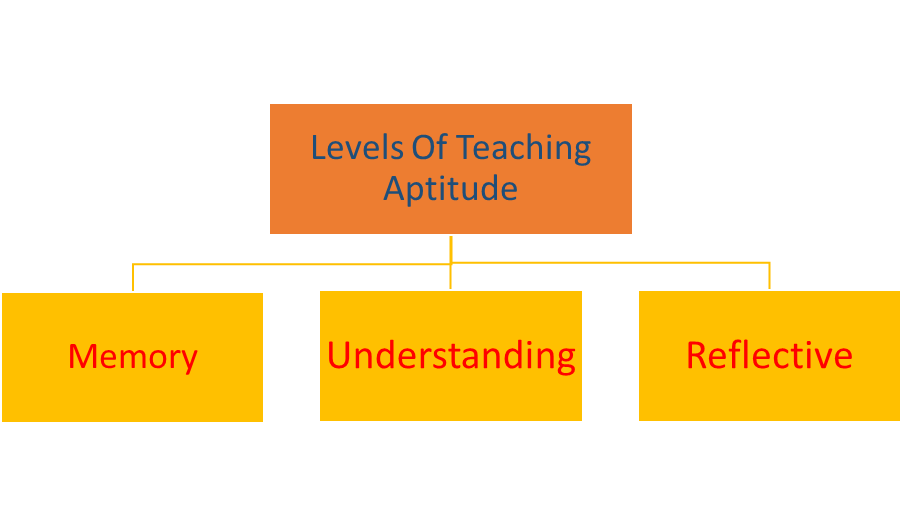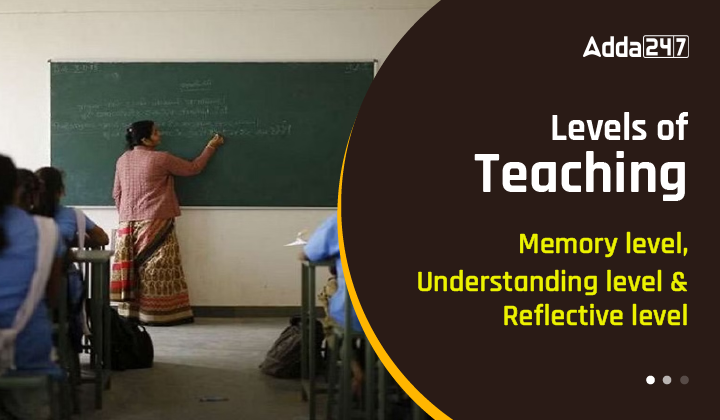Table of Contents
Teaching takes place at three different levels: memory level teaching, understanding level of teaching, and reflective level of teaching. Each level of teaching builds upon the previous one, with the ultimate goal of helping students develop a well-rounded understanding and application of knowledge. Teachers employ various instructional strategies, assessments, and learning activities to cater to each level and support students’ growth and development in their educational journey.
UGC NET Study Notes for Paper 1
What is Teaching
Teaching is a social and cultural process, which is designed to enable an individual to learn. It is a process in which one individual teaches or guides another individual. It is considered an act of providing instructions to the learners in the classroom situation.
- According to N.L.Gage, “Teaching is a process of interpersonal influence aimed at changing the behaviour potential of another person.”
- According to J B Hough and James K Duncan, “Teaching is an activity with several phases, a curriculum planning phase, an instructing phase, and an evaluating phase.
Thus, the purpose of teaching is to bring modifications to the behaviour of the learner. During this process, the students and teachers interact in different ways.
Characteristics of Teaching:
The following are the major characteristics of teaching:
- Teaching is a process of development and learning.
- Teaching results in a behaviour change.
- Teaching is a science as well as an art.
- Teaching is face to face encounter.
- Teaching is observable, measurable, and modifiable.
- Teaching is a social process
- Teaching is about giving and receiving information
- Teaching is an interactive process
- Teaching is a skilled occupation
- Teaching facilitates learning
- Teaching is both a conscious and an unconscious activity.
- Teaching is from the memory level to the reflective level.
Levels of Teaching
Teaching takes place at three different levels which are explained in detail as follows:
- Memory level teaching
- Understanding level of teaching
- Reflective level of teaching

Memory level of Teaching
It is related to memory or mental ability that is prevalent in all living beings. Teaching at the memory level is taken as the very basic and lowest level of teaching. Key points to remember are:
- It is the first stage of teaching and promotes the habit of ROTE Learning of facts and subjects.
- At this level, the pupil learns to identify, recall or remember the objects, ideas, and events, and memorise them.
- At this level, students retain and reproduce the learned subject.
- It emphasises on presentation of facts and information via CRAMMING.
- The learner learns through memorization
- The role of the teacher is prominent here
- The teaching-learning process is teacher oriented not learner oriented
Understanding level of Teaching
This stage comes in between memory and reflective level of teaching. This stage focuses on a moderate level of thoughtful behaviour. It is essential because a learner can’t shift towards a reflective level of learning if he or she has understood this level of teaching. Below are the major features of the understanding level of teaching:
- The understanding level of teaching is propounded by H. C. Morrison.
- It focuses on the mastery of a particular subject
- This assists in building the thinking level of students to make effective use of their acquired knowledge about previously known facts and subjects.
- Student and teacher both play an active role
- The teacher explains to the student the relationship between principles and facts and teaches them how these principles can be applied.
- The evaluation system under the understanding level of teaching mainly consists of objective-type questions and essays.
Reflective level of Teaching
The reflective level of teaching is propounded by Hunt as the highest level of teaching. Teaching at a reflective level represents the highest level of teaching that can be carried out at the most thoughtful modes of operation. Following are the features of the reflective level of teaching
- The reflective level of teaching is considered to be the highest level at which teaching is carried out.
- Teaching at the reflective level assists the students to solve the real problems of life.
- This level is also called the introspective level.
- It is highly thoughtful and useful.
- A student can attain this level only after going through memory level and understanding level.
Difference between Memory, Understanding and Reflective level of Teaching
| BASIS OF DIFFERENCE | MEMORY LEVEL | UNDERSTANDING LEVEL | REFLECTIVE LEVEL |
|---|---|---|---|
| Proposed by | It is proposed by Herbert | The proponent of this is Morrison | This is provided by Hunt |
| Aim | Its aim is to make students cram the facts and figures | Its objective is to enhance the understanding of the student with respect to a certain concept and grasp the idea and comprehend the meaning. | Its aim is to develop a high level of thoughtfulness in teachers as well as learners. |
| Teacher-centred/ learner centred | It is teacher-centred | It is teacher-learner centered | It is learner-centred. |
| focus | It focuses on stimulus-response | It deals with the generalisation of principles | It is problem-centred and works on finding a solution to the problem |
| Qualities to be inculcated | It develops the learner’s ability to: retain and recall | It develops thinking ability among students | It develops reasoning, logic and imagination among learners. |
Download UGC NET Teaching Aptitude Study Note PDF
To Download the UGC NET Teaching Aptitude Study Note PDF, candidates must click on the following link. It is beneficial for the candidates to download and save the UGC NET Level of Teaching Study Note PDF to easily refer to it during preparation and revision
Levels of Teaching, Download UGC Teaching Aptitude Study Notes PDF




 UGC NET Study Notes for Paper 1, Downloa...
UGC NET Study Notes for Paper 1, Downloa...
 GSET Teaching Aptitude Questions and Ans...
GSET Teaching Aptitude Questions and Ans...
 समुद्र का पर्य�...
समुद्र का पर्य�...












